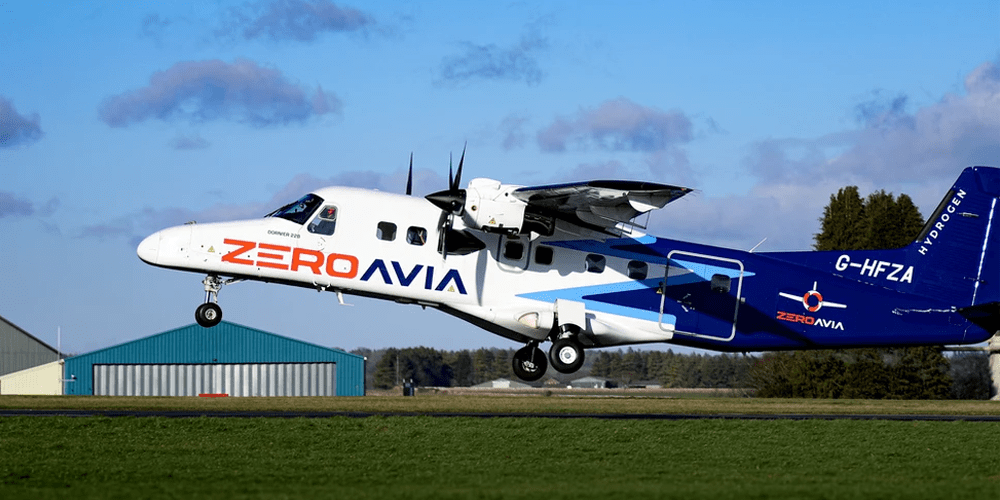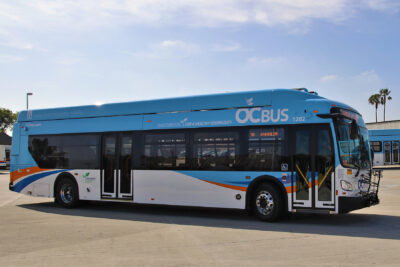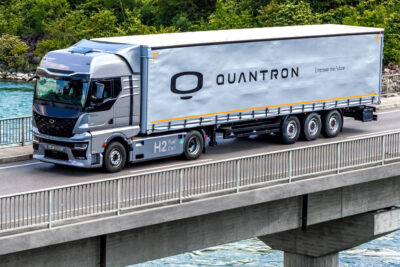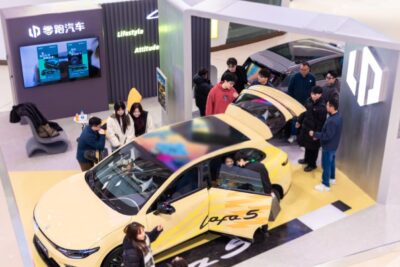ZeroAvia announces FC cooperation with Shell and Rotterdam Airport
ZeroAvia, a company specialising in electric aircraft propulsion, announced a cooperation with Shell and Rotterdam Airport. The partners want to prepare for commercial passenger flights with H2 aircraft from 2025.
Part of the preparation for H2 flight operations now agreed by the trio is to develop a concept for hydrogen operations at airports by the end of 2024 and to conduct demonstration flights to European destinations. For the demonstration flights, the partners are specifically aiming to establish European flight routes to airports within 250 nautical miles (around 463 kilometres) of Rotterdam.
Rotterdam’s The Hague Airport is the local hub of the project. Shell, as a partner in the project, will provide the infrastructure by contributing its experience in “the development and operation of refuelling facilities, including hydrogen”. Basically, the project aims to enable flight operations based on ZeroAvia’s hydrogen-electric ZA600 propulsion system. In January, the FC propulsion expert famously demonstrated the first flight of a 19-seat aircraft powered by a prototype of its ZA600.
Oliver Bishop, General Manager of Hydrogen at Shell, calls the project a milestone. He says the collaboration will enable the rapid decarbonisation of a sector that has been difficult to electrify. “It also offers the chance to support one of the first international zero-emission passenger routes. On top of that, it allows the opportunity to road test multi-fuel and multimodal fueling operations in a live airport environment.” He said this was a major step forward for hydrogen aviation and Shell’s plans in this area.
ZeroAvia and Shell are already cooperating in the US. There, the energy giant is providing low-CO2 hydrogen to power some test and early commercial facilities in California, according to ZeroAvia. Shell also invested in the FC propulsion developer in 2022.
Incidentally, ZeroAvia made its first flight a few weeks ago with a Dornier 228 converted to hydrogen fuel cell propulsion. The flight at Cotswold Airport in Gloucestershire lasted about ten minutes. According to an official company statement, the flight included a taxi phase, take-off, a circuit and landing. All systems worked as expected, ZeroAvia said afterwards.
The aircraft, developed as part of the HyFlyer II project, is the world’s largest hydrogen-electric aircraft to date, according to ZeroAvia. The maiden flight will now be followed by a series of further test flights. In September 2020, ZeroAvia already managed the maiden flight of a six-seater H2 aircraft based on a converted Piper as part of the predecessor project HyFlyer I, followed by a good 30 further flights. Even then, it was announced that the next step would be to convert an aircraft with ten to 20 seats.
Since then, the developers of the HyFlyer II programme have been working on the conversion of two 19-seat Dornier 228 aircraft, one in the UK and one in the USA, both with the new ZA600 engines. ZeroAvia claims 600 kW of power for this engine unit, compared to 250 kW for the Piper.
The maiden flight with the Dornier-228 test aircraft took place in a partially converted phase, so to speak. Thus, the aircraft took off with the newly developed full-size H2 power train on the left wing, but still a conventional engine (Honeywell TPE-331) on the right wing. In addition, the H2 tanks and FC power generation systems were located in the cabin – not external storage as later intended. However, the aircraft is to be completed in a certifiable configuration before the end of the year.
The 19-seater will thus in future have two 600-kW units mounted on the wings instead of the turbines. The hydrogen tanks will be able to store up to 100 kilogrammes of compressed hydrogen. For the planned start of commercial operation in 2025, ZeroAvia wants to achieve a range of “initially 300 miles”, about 480 kilometres, with this amount of hydrogen. This is close to the current figures mentioned at the beginning of this article. In earlier announcements, the developer spoke of a target of 500 miles.
Incidentally, PowerCell is to supply the stacks for the series version of the propulsion system. Last summer, ZeroAvia awarded the company what it describes as “the world’s first contract for the series delivery of hydrogen fuel cell stacks to the aviation industry” with a potential value of up to 1.51 billion Swedish Kronor, the equivalent of around €100 million. A prerequisite for the deal to go through, however, is that ZeroAvia obtains the necessary certifications for its FC aircraft.
ZeroAvia’s medium- and long-term strategy is to initially work on ten- to 20-seat aircraft. But with a US$35 million financing round completed just over a year ago, ZeroAvia is already targeting the 40- to 80-seat aircraft segment that will follow. “Turboprop aircraft by 2026 and regional jets by 2028,” the company wrote at the time.
With reporting by Cora Werwitzke, France.





1 Comment